
High Powered Diodes.
Quality Construction.
Excellent Support.
Made In America.
Heat.
Price.
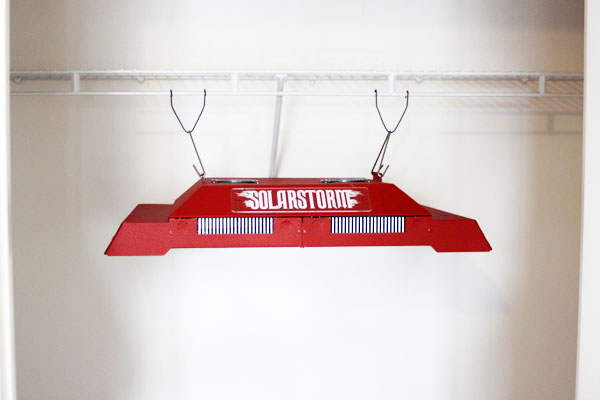
40 Pounds of Light-Making
Recently California LightWorks ran an advertisement in Maximum Yield and High Times. This has led to me receiving an onslaught of questions about their new LED grow lights: the SolarStorm and the SolarFlare. When enough people ask about a light I try my best to do a review on it. Initially I was planning on going with the SolarFlare, but I decided to go big this time and got my hands on the 800W SolarStorm. Now I’m just trying to find a space in my house where I can start growing (all my normal spaces are already occupied with other LED grows).
P.S. I’m sad to say that I’ll be giving this bad boy away to one of my lucky readers (I’ll miss the time we had together).
Let’s get to the review.
Customer Service/Warranty: A-
The owner of California LightWorks (George Mekhtarian) is an exceptional guy and he has been known to answer customer questions with unbelievably long emails or phone calls.
California LightWorks has a contact form that works (which is more than I can say for some of the companies I’ve contacted) and a phone number that you can use to get a hold of them.
These lights are pretty hot off the market so it’s hard to say how warranties and customer service will be handled (will the warranty really be hassle free?). That being said, California LightWorks has an A+ score from the Better Business Bureau. California LightWorks was previously known as MWW Inc. and it appears that in its 13 years of history the company has never had a complaint filed against it (that’s saying something). I haven’t run into very many companies that have an A+ score from the BBB.

California LightWorks offers a two year warranty on both the SolarStorm and SolarFlare. This is about on average with the industry (although some companies are now offering 3 year and 5 year warranties—I even saw one offering a lifetime warranty, though that’s likely a marketing ploy). For now, I’m giving George and his company the benefit of the doubt.
Lifetime of Light: Heat Sink, Build Quality, Etc.: A+
In my previous LED grow light reviews I gave a score on the heat sink of the light. The reason I did this was to show the importance of the heat sink (the better the heat sink the longer the light lasts). There are other important factors to consider when determining the lifetime of an LED grow light. Some of the main factors include the heat sink, the drivers, the diodes, and how much power the light is pumping into the diodes.
California LightWorks really knocked it out of the park with build quality. I highly recommend you read this interview with George (the owner). Focus on the part where he talks about junction temperature. The guy knows what he’s doing.
This is the only LED grow light I know if that is actually assembled in the United States. All the other companies do the designing here in the USA, but then they outsource the assembly to China.
Price Range: B
You are probably wondering how I’m giving a $2,000 grow light a decent grade. The industry average is around $4 per watt. The SolarStorm has an actual draw of around 620 watts. $2,000/620 watts = $3.23 per watt. The SolarFlare operates at around 165 watts. $450/165 watts = $2.73 per watt. This is actually a pretty good deal and below the industry average. That being said, it’s hard to give an A grade on pricing to a $2,000 light.
Color Spectrum: A
The SolarStorm comes with peak wavelengths of 450, 470, 620, and 665nm. It also has light in the warm white area of 430 to 700nm. Perhaps its most intriguing feature is the UVB light in the 280-315nm range. There have been a couple of studies showing that Tetrahydrocannabinol (THC) is positively affected when UVB light is added.
In my opinion, the UVB light isn’t a big deal, but it’s still a nifty little addition (I flip it on during flowering!).
Actual Watts Drawn: No Grade (Informational)
SolarFlare: 165 Watts
SolarStorm:
- Veg Mode: 450 Watts
- Bloom Mode: 620 Watts
- Bloom Mode with UVB: 650 Watts
The SolarStorm draws a lot of juice.
Heat Generated: C
I’m a huge fan of this light, but I wouldn’t recommend it for everybody. The one weakness in the SolarStorm is that it puts out a lot of heat for an LED grow light. It definitely puts out less heat than an HPS, but this baby got my grow room heated up in a hurry. In other words, if you don’t have a good cooling system in place and you’re looking for a stealthy grow, I wouldn’t recommend the SolarStorm.
Coverage Area: A+
I have to admit that I was initially very skeptical that the SolarStorm would cover a 4’X4’ area. Normally a two foot long LED light can’t cover a 4’X4’ area. However the SolarStorm has a unique blend of 120 degree beam angle and five watt diodes.
You see normally LEDs with a 120 degree beam angles don’t have much power when you get a foot or two away from the light source. That’s because most LEDs are using either 1 watt diodes or 3 watt diodes. The SolarStorm and SolarFlare are the only two lights I know of that use a true 5 watt diode.
The combination of the 120 light angle and the five watt diode make for a pretty wicked combination (you get width and depth). The light gave great coverage for my 5.5’ X 3.5’ closet. That’s over 19 square feet. Take a look at some of the pictures from my grow (you can click on any of them to make them larger).
Because the light is so powerful I placed it farther away than I normally do with an LED. This proved to work to my advantage because the plants still got the necessary light and my coverage was even better.
The above is actually two pictures that I squished together on my website in hopes to show you how great of coverage I got with the light (very happy about that as you can tell).
Below are some more pictures from my grow (again, click on them to make them larger).
Day 1: April 13th, 2012
Day35: May 18, 2012
Can I just say that I’m very happy with how this grow is progressing. My indoor maters are completely dominating the tomatoes that I planted outside at the same time. I know, it’s not a fair competition because I can force my indoor maters to flower, but still pretty cool stuff.
Summary:
The SolarStorm might be the biggest and baddest light on the market. The feature I liked the least about the light is the amount of heat it put out when compared to other LEDs. The feature I liked best about the light is the absolutely genius idea of mixing five watt diodes with a 120 degree beam angle. This light gives you great coverage area when compared to other LEDs. You can read my interview with California LightWorks to see their opinion as to why they’re the only company that’s able to get away with using 5w diodes.
Feel free to ask me any questions you have about the SolarStorm or SolarFlare. I’ll be getting details up about how you can win my SolarStorm in the near future.





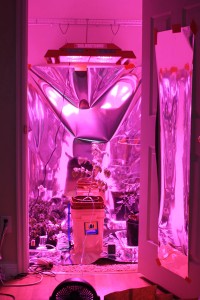
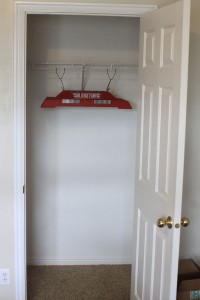
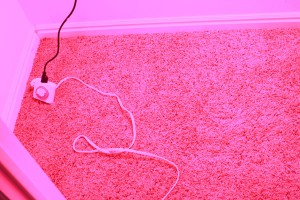
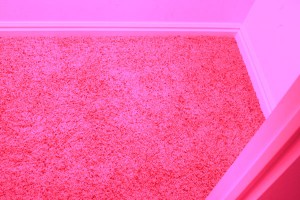
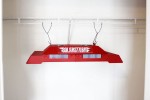

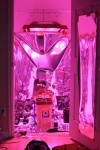
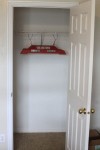
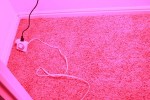
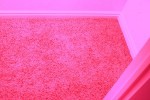
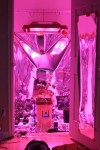
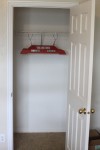
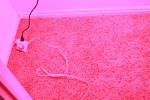
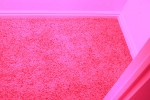
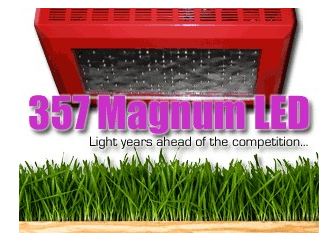
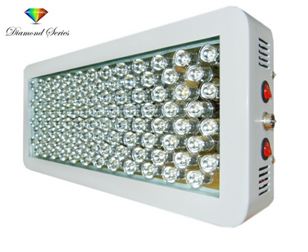
Hey,
I really enjoy the site. I have been wondering about the Inda-gro induction lights for some time now. I know that they are not led, but they are an alternative to more inefficient lighting sources. Is there any chance for a review on one of these lights?
It’s in the works Steve. I’ve got a friend running an HPS vs LED vs Induction lighting. The grow is pretty early on but I have to say I’m impressed by the induction light. All the lights are performing well. I’ll share more results when the grow is finished.
Best,
Nate
Every light you review is the top rated best light your have seen. How can we tell if it’s a total wate of money using your site?
Hey Ozzy,
Gotta love your comments on the site (always negative haha). Anyways, I never said the SolarStorm was the best light I’ve ever seen. In fact, I mentioned that it puts out more heat than most LEDs and it’s a bit louder. I think that’s solid information that you couldn’t obtain without actually owning the light (like I do!).
I am impressed by the unique combination of 5 watt diodes and 120 degree beam angles. Is that the part you’re talking about?
Most of the lights I’ve grown with have worked very well with my plants (except for the super cheap ones you find on eBay). I can’t really give a poor review to a product that’s doing its job. I have my favorites, but I try not to let that get into the reviews.
If there’s any additional information you’d like to know about the lights I review, just let me know!
Best,
Nate
The data is all ready out on the solarstorm .The growers forums has a complete grow journal .Basically it performs similiar to a 600 WATT HPS but has lower yields .Although it does have smaller yields the quality of the finished product is surprisingly strong . It comes down to personal choice and how much your willing to spend ? Pros are electrical savings and less nute use versus a regular HPS set -up for half the price with more yields but more energy useage . Remembering you will need to have fans to deal with heat issues with both lights especially in smaller enclosed areas .
Thanks for sharing.
Proud owner of this light…you actually recommended it via Grasscity.com!
1st lemme say George rocks. Any and every email I have sent him is answered pretty promptly. Its about the only time Ive ever heard of a CEO of a company other then Steve Jobs responding to emails usually regardless of how small the company is you either do not get a response or a standard computer reply.
Regarding there warranty. I emailed George about that and everything being said LEDs should last for many years beyond 10 cant remember the exact figure now. Assuming that they do and something else breaks…well all the parts are pretty inexpensive to fix…some ballasts for the T8s, fans on top.
Usually a good rule of thumb on LEDs is whatever its rated your getting half power. With my Solarstorm on Flower with T8 UV lights on I am pulling about 690 watts. The fans are low power not sure the wattage but cant be more then 10 watts. That being said the amount of LED power coming through is astounding compared to the competitors. Nearly every LED out there if its a 800w panel you can bet on about 400 watts of actual draw. Kudos to California Light Works for attempting to hit advertised numbers.
As for cooling…it does generate heat but thats the fallacy of people who think LEDs do not generate heat. 690 watts pulling 5 amps (think thats how many amps) is 690 watts be it a CFL, HID, LED. 690 watts generates alot of heat. I’m a electronics tech for a living its the name of the game. Its why Intel and others constantly are trying to lower wattage used in there processors to have them run cooler. Simple Electrical Theory at work there.
To deal with the heat I did have a 4 inch inline fan had to run it at max to keep it at 80-85 degrees. Replaced it with a 6 inch one and temps are just fine. My tent is a 4×4 area.
For myself Ive never entertained the LED vs HID argument. Its a silly one. You grow with whatever you can afford and what you like. There are people that grow with banks of CFLs to each his own. Prior to my LED move I was using a 600w HPS. In my opinion it easily matches that. The easiest way to tell is to look at the PAR measurements compared to HID. There on par.
In terms of money saved…ehhh with the fan Im using 800 watts or so 800 watts is 800 watts and its gonna add to the bill..price of doing business though.
Dont know if this is a no no on here but heres a link to a plant I grew that Paradise Seeds was hyper impressed with. Its a Wappa. If you go to the link its the last two in there Seeds Gallery Catagory.
http://www.paradise-seeds.com/gallery
All in all hyper impressed with this light to the point of loving it. It looks sexy, excellent customer service, and it performs and in the end thats about all that matters really.
hey nate love the site was wondering if you was planning on doing a review for haight soild state leds using the 6w leds.
thanks
Hey JRL,
I wasn’t planning on reviewing any of Haight’s Lights, but I’ll contact them and see if they would be willing to work with me.
Best,
Nate
Inda-gro! Inda-gro! Inda-gro! The nation is clamoring for a review on the Inda-gro lights! Awesome website by the way.
Hey Steve,
It’s in the works! Hope to have some preliminary results soon.
Nate